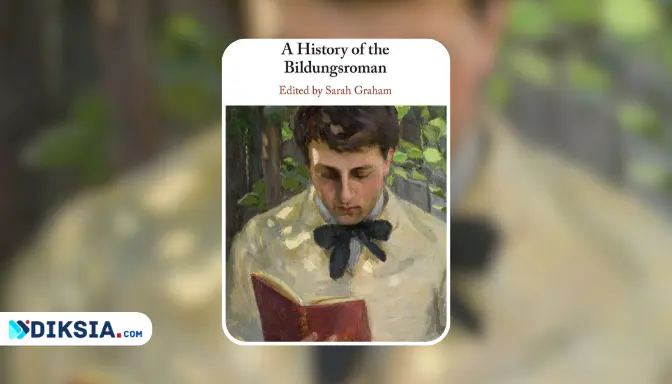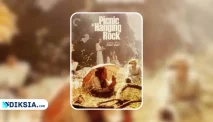Diksia.com - What is a bildungsroman? How did this genre emerge and evolve? Why is it still relevant and popular today? These are some of the questions that this article will explore, using examples from various literary works that belong to the bildungsroman tradition.
A bildungsroman is a type of novel that focuses on the psychological and moral development of the protagonist from childhood to adulthood, often through a series of challenges, experiences, and discoveries. The term comes from the German words “Bildung” (education, formation) and “Roman” (novel). It is also known as a coming-of-age novel, a novel of education, or a novel of formation.
The bildungsroman genre originated in Germany in the 18th century, with the publication of Christoph Martin Wieland’s Geschichte des Agathon (1767) and Johann Wolfgang von Goethe’s Wilhelm Meister’s Apprenticeship (1795-96), which are considered the classic examples of the genre. The genre spread to other European countries and later to the rest of the world, influencing many famous authors and works, such as Charles Dickens, Jane Austen, Charlotte Brontë, Mark Twain, James Joyce, J.D. Salinger, Harper Lee, and many more.
The bildungsroman genre is characterized by a number of formal, thematic, and stylistic features, such as:
- A single protagonist, usually a young and naive person, who undergoes a significant change in character, personality, or worldview.
- A chronological and linear narrative structure, following the protagonist’s life from childhood to adulthood, or from one stage of life to another.
- A realistic and detailed depiction of the social, historical, and cultural context of the protagonist’s life, often reflecting the author’s own background and perspective.
- A conflict between the protagonist’s individual aspirations and the expectations and norms of society, family, or other external forces.
- A quest for identity, meaning, or purpose, often involving a journey, a mentor, a love interest, or a crisis.
- A resolution that involves a balance or a compromise between the protagonist’s personal goals and the demands of reality, often accompanied by a sense of maturity, wisdom, or acceptance.
Examples of Bildungsroman Novels
To illustrate the diversity and richness of the bildungsroman genre, here are some brief summaries of some well-known novels that belong to this category, along with their main themes and features.
Jane Eyre by Charlotte Brontë (1847)
Jane Eyre is the story of a young orphan girl who grows up in a harsh and oppressive environment, first at the hands of her cruel aunt and cousins, then at a boarding school where she suffers from poverty, disease, and injustice. She becomes a governess at Thornfield Hall, where she falls in love with the mysterious and brooding Mr. Rochester, who hides a dark secret. Jane faces many obstacles and temptations in her quest for happiness, independence, and self-respect, until she finally finds her true place in the world.
Jane Eyre is a classic example of a female bildungsroman, as it explores the themes of gender, class, religion, and morality in the Victorian era. Jane is a strong and rebellious heroine, who defies the conventions and expectations of her society, and asserts her own identity and voice. The novel also incorporates elements of Gothic and romance genres, creating a captivating and complex narrative.
The Adventures of Tom Sawyer by Mark Twain (1876)
The Adventures of Tom Sawyer is the story of a young boy who lives in a small town on the Mississippi River in the 19th century. He is a mischievous and imaginative child, who loves to play pranks, skip school, and have fun with his friends. He also has a sense of adventure and curiosity, which leads him to witness a murder, run away from home, explore a cave, and find a treasure. He also experiences his first love, friendship, and moral dilemmas, as he learns about the realities and dangers of the world.
The Adventures of Tom Sawyer is a classic example of a male bildungsroman, as it depicts the transition from childhood to adolescence, from innocence to experience, and from fantasy to reality. Tom is a typical American boy, who embodies the values of freedom, individualism, and optimism. The novel also reflects the culture and history of the American South, with its humor, dialect, and social issues.
A Portrait of the Artist as a Young Man by James Joyce (1916)
A Portrait of the Artist as a Young Man is the story of a young man who grows up in Ireland at the turn of the 20th century. He is a sensitive and intelligent boy, who struggles with his family, religion, and nationality, as he tries to find his own artistic and personal identity. He goes through various stages of development, from childhood to adulthood, from innocence to sin, from faith to doubt, from conformity to rebellion, and from nationalism to cosmopolitanism. He eventually decides to leave his homeland and pursue his artistic vocation abroad.
A Portrait of the Artist as a Young Man is a classic example of a Künstlerroman, a subgenre of the bildungsroman that focuses on the formation of an artist. It is also a semi-autobiographical novel, as it reflects Joyce’s own life and experiences. The novel is innovative and experimental in its style and technique, using stream of consciousness, symbolism, and allusions to create a complex and rich portrait of the protagonist’s mind and soul.
To Kill a Mockingbird by Harper Lee (1960)
To Kill a Mockingbird is the story of a young girl who lives in a small town in Alabama during the 1930s. She is a curious and precocious child, who observes and narrates the events and people around her, especially her father, Atticus Finch, a lawyer who defends a black man accused of raping a white woman. She also befriends a mysterious and reclusive neighbor, Boo Radley, who saves her and her brother from a violent attack. She learns about the themes of racism, justice, courage, and compassion, as she grows up in a turbulent and changing society.
To Kill a Mockingbird is a classic example of a social bildungsroman, as it deals with the issues and conflicts of a specific time and place, and how they affect the protagonist’s moral and psychological development. Scout is a sympathetic and relatable narrator, who conveys the innocence and wisdom of childhood, as well as the humor and tragedy of life. The novel is also a powerful and influential work of literature, that has inspired and challenged many readers and writers.
Conclusion
The bildungsroman is a fascinating and versatile genre, that has produced many memorable and influential novels throughout history and across cultures. It is a genre that appeals to both the readers and the writers, as it reflects and explores the universal and timeless themes of human nature, society, and identity. It is a genre that invites us to join the protagonist on their journey of self-discovery, and to learn and grow along with them.






